Gasoline Prices
Overview
So what’s up with the price of gasoline? That’s always a hot topic, but contrary to popular belief, gasoline is one of the most competitively and transparently priced consumer products.
So how is gasoline priced? There are four factors:
1
Crude oil prices
As a commodity that trades in world markets, crude oil prices fluctuate according to supply and demand. Global economic conditions, geopolitical or military events and other factors can all affect the price.
2
Wholesale prices
The wholesale price of refined gasoline is also a factor of supply and demand. World events such as refinery incidents, extreme weather, or changes in demand play a role in determining the wholesale or commodity price.
3
Retail mark-up
most retailers are independent business owners, so they are able to competitively set their own margins, but the retail price still tends to fluctuate along with wholesale prices. As margins on fuel are typically very low, retailers often add services such as a car wash or convenience store to help them meet their overheads.
4
Taxes
an average of 49 cents per litre at the pump. These taxes include carbon tax, federal and provincial taxes, and some municipalities charge an additional local tax. Gas prices at the pump are typically lower in the US because of the difference in taxes.
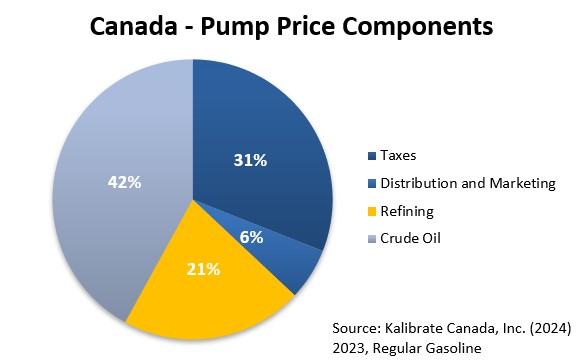
Crude oil prices fluctuate according to supply and demand
Crude oil is a commodity that trades in world markets. The market price of crude oil at any time is a function of commodity traders’ assessments of supply and demand conditions, both current and future. These assessments take into account a variety of scenarios that can affect supply and demand such as economic conditions, natural disasters and geopolitical or military events, especially in major oil-producing regions.

Taxes by Jurisdiction
Canadian gas taxes are more than twice as high as those in the US. Outside of taxes, historical price data shows that the price of gasoline in Canada is very similar to the US. Canadian gas taxes not only vary from one province to another, but also from one region to another. Outside taxes, gasoline prices are similar across Canada.
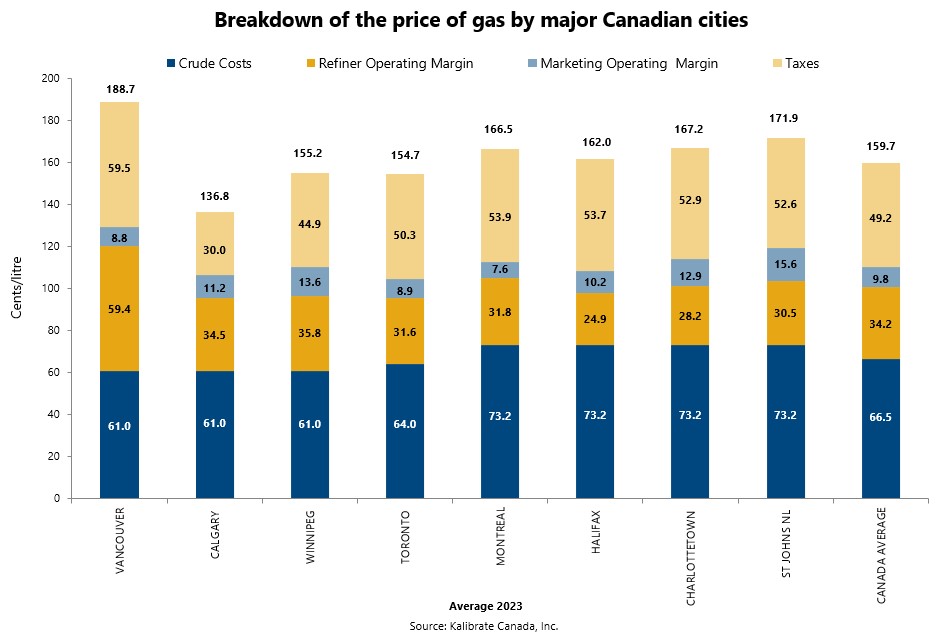
Taxes by Jurisdiction
Canadian gas taxes are more than twice as high as those in the US. Outside of taxes, historical price data shows that the price of gasoline in Canada is very similar to the US. Canadian gas taxes not only vary from one province to another, but also from one region to another. Outside taxes, gasoline prices are similar across Canada.


Canada/U.S. Price Component Comparison
The main reason gas has cost less in the United States when compared to Canada is because gasoline is taxed at a lower rate in the United States. Outside of taxes, the average price of a litre of gasoline in Canada is quite similar to the price in the United States.
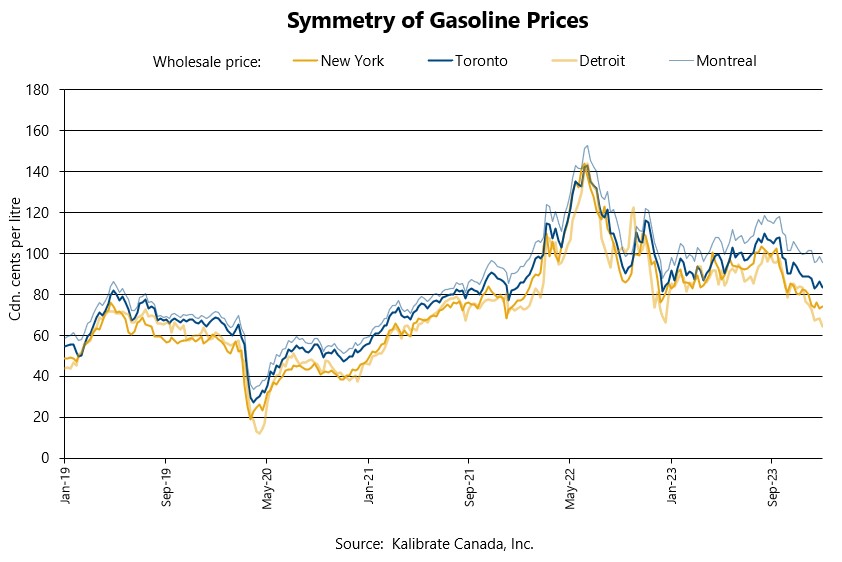
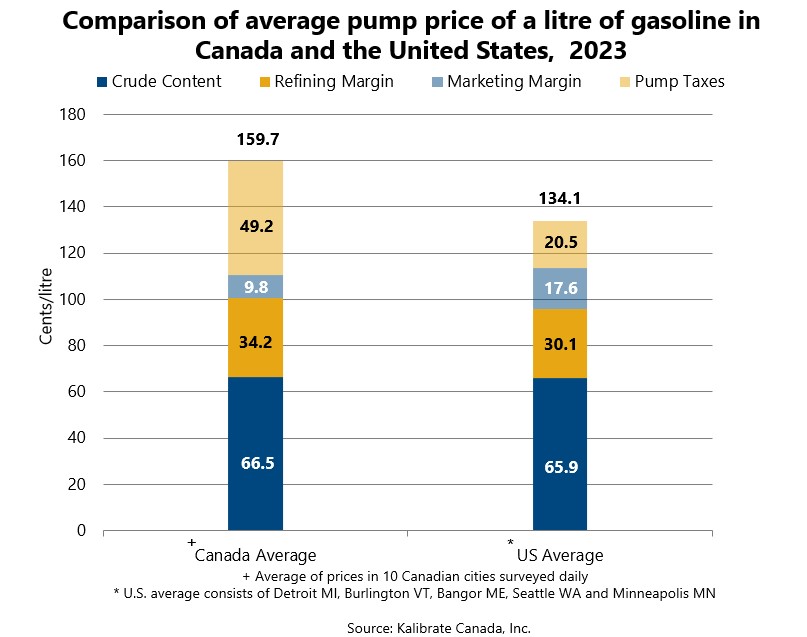
International Comparisons
Historical data shows that Canadians pay less for gasoline than consumers in most countries. The chart below compares the prices in eight countries and shows the effect of taxes on pump prices.
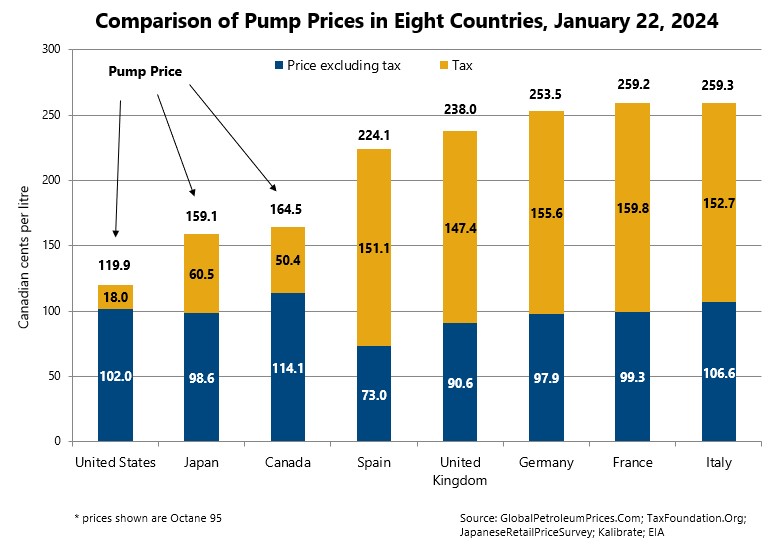
Regulated Markets
Some provinces regulate the price of gas to prevent below-cost selling, to protect their dealer margins and to ensure retail price stability.
This is called a regulated market. Prince Edward Island, Newfoundland and Labrador, Nova Scotia, New Brunswick and Quebec all have some form of price regulation.
However, many studies and reviews have shown that an open unregulated marketplace is the best way to ensure competitive pricing. Regulated price stability is usually achieved at the expense of higher prices at the pump.
You can learn more about regulated markets in your province:
- Quebec (in French only)
- Newfoundland and Labrador
- Nova Scotia
- New Brunswick
- Prince Edward Island